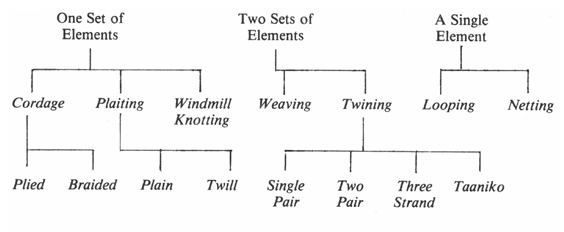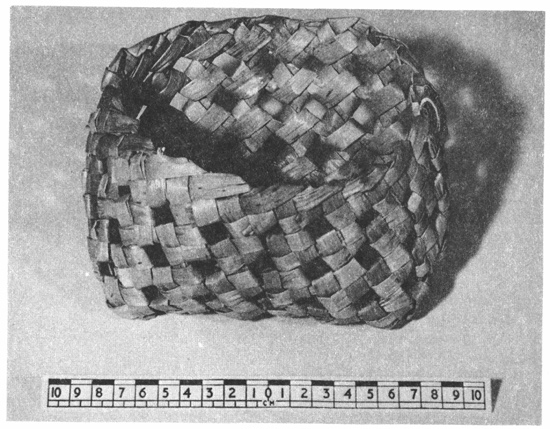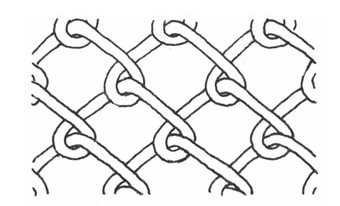A Descriptive Classification of Maori Fabrics:
Cordage, Plaiting, Windmill Knotting, Twining, Looping and Netting
Jane Connor University of Auckland

Figure 1 The Form of the Classification
In Windmill Knotting the elements are not fixed at the start, but are added as necessary.
This is a technique in which a fabric is built up by the repeated interaction of pairs of elements from one set. The interaction is popularly known as the windmill knot.
It does not possess the distinguishing structural characteristic of a knot: “a loop in an element through which the same element passes” (1966:226). The windmill knot is so called because it has been used as a toy by Maori children. The free ends become the arms of a windmill which is fastened to a stick through the knot. A braided cord can also be formed from this knot by repeatedly folding the free ends over one another in the manner of the original knot.
Only one pair can be worked at a time and the action is repeated using the free ends of those elements already involved, new elements being introduced as necessary. The elements are oblique to the sides of the fabric and the knot is oriented diamond-like in rows. Work can proceed in any direction. The reverse of the fabric differs from the face.

Fig 9 Windmill Knotting

Fig 10 basket worked in Windmill Knotting
At the current time I am researching Windmill Loop weaving. The Loop weaving decribed here involves the looping of a single element, as shown below, and not the weaving of loops.

Fig 21 Looping
Journal of the Polynesian Society

PROFILE
The Polynesian Society is a non-profit organization based at the University of Auckland, New Zealand. Founded in 1892, the Society’s aim was the scholarly study of past and present New Zealand Māori and other Pacific Island peoples and cultures. It has pursued this aim primarily through the Journal of the Polynesian Society, a quarterly publication begun at the Society’s inception and enduring to the present.
Main Research Source
- Volume 92, No. 2, p 189-214 (1983)
